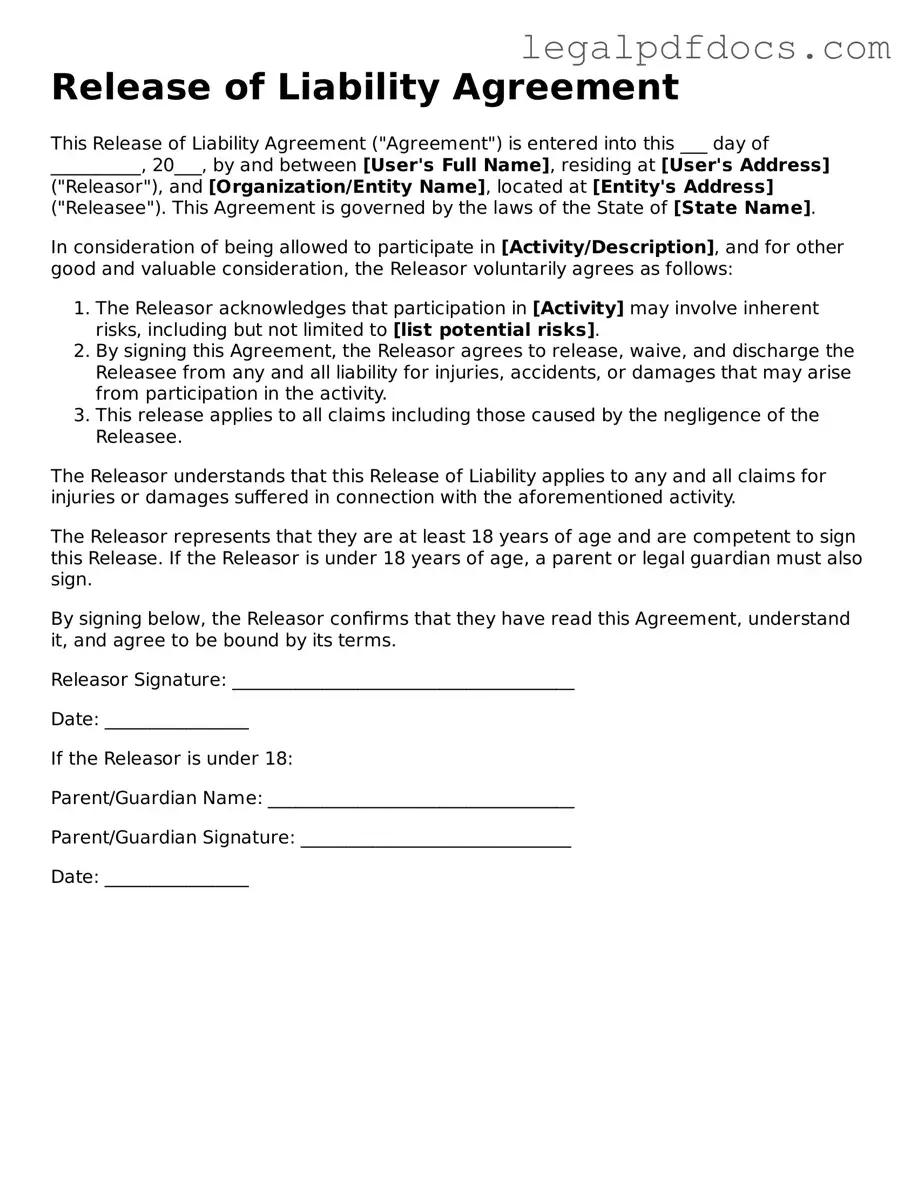A Release of Liability form is an important document that helps protect individuals and organizations from legal claims arising from injuries or damages that may occur during specific activities or events. By signing this form, participants acknowledge the inherent risks involved and agree not to hold the organizer or provider responsible for any accidents or injuries that may happen. This form typically outlines the activities covered, the risks involved, and the rights being waived by the signer. It is crucial for both parties to understand the implications of the agreement, as it can significantly impact their legal rights. While the form serves as a safeguard for organizers, it also emphasizes the need for clear communication about potential hazards. Ensuring that participants are fully informed and voluntarily consenting to these terms is essential for the form to be enforceable. Ultimately, a well-crafted Release of Liability form can foster trust and transparency between parties, allowing for safer and more enjoyable experiences.
